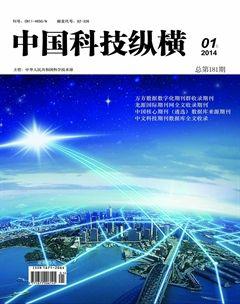The Characteristics ofEmailLanguage onInternet
Wang Xiao-Hui,Ma Hao-Yan
(1.Yingkou Vocational Technology College,Liaoning,Yingkou,115000;2.Shenyangjianzhu University,Liaoning,Shenyang,110168)
The Characteristics ofEmailLanguage onInternet
Wang Xiao-Hui1,Ma Hao-Yan2
(1.Yingkou Vocational Technology College,Liaoning,Yingkou,115000;2.Shenyangjianzhu University,Liaoning,Shenyang,110168)
With the popular use of computer in our life and work, the E-mail has become the important medium of people’s communication insteadof letter, fax and telephone. The E-mail language has its own unique characteristics. On one hand it tends to be oral, informal,on the other hand it resemblesthetraditional letter which has the fixed structure of discourse .By analyzing the E-mail language features we can use the communication tool correctly.
E-mail language;oral and informal ;written letters
【Introduction】As the most familiar and widely usedmode of Computer Mediated Communication,email is undoubtedlyan influential force in contemporary communicationexchange.Due to inexpensive pricing and accessibility,email is replacing both the telephone and the traditional letter as most convenient means of two-person discourse.the Wall Street Journal?confirmed that almost four trillion email messages had been exchanged as compared to the107 billion articlessent first-class through the US post office[1], and, predictably,the numbers have continued to rise by staggering degrees,as similar studies have estimated that the total daily numberof personal emails alone being exchanged was 8billion, not accounting for business-oriented communication.This increasing level of electronic communicative exchangemust necessarily affect the way users of email are interactingwith each other.
1 Writing Based
1.1 Resembling the traditional letter
Early attempts to characterize the language of emailtended to argue for the predominance of either an oral or awriting based standard of communication, though almost allcontemporary studies seem to agree that electronic languageuse is influenced by both equally or else falls into a separatecategory outside of this dichotomy.One of the more remarkable ways in which email resemblesthe traditional letter is the fixed structure of discoursethat email messages are composed from.Following the structuralelements of a business-like memo,typically includinga “To” and “From” address, a subject header, a space forcarbon copies, and a message body, this practice has becomeincreasingly standardized among compositional software andwidely recognized and accepted by email users. This structuralformat is an adaptation of the intraorganizationalmemorandum, a template originally created in the late 19thcentury for succinct communication within a large economic or governmental body[2].
1.2 The social dynamic of email communication
The email communication also resembles that of writing,as both correspondents are separated physically from eachother,which, as a result, promotes a greater intimacy orpersonal disclosure than face-to-face communication affords.Moreover,the anonymity and depersonalized presence providedby email tends to help “level the conversational playingfield,” as relationships of differing social status orpower tend to be less apparent within email correspondences[3].Additionally, several studies have indicated that CMCgreatly differs from standard letter writing in the distributionof different types of pronouns, as the former far exceedsthe proportional use of first and second person pronounsfound in the latter, suggesting that the kind of intimacymore closely resembles speech communication, where weexpect to see a higher proportional use of first and secondperson pronouns[4].
2 Or Oral Based
2.1 The function of punctuation
The inattention to or omission of punctuation is typicalof most informal correspondence and suggests a more fluid,speech-like means of communicating.As Crystal has noted ofemail, “Punctuation tends to be minimalist in most situations…It is an important area, for it is the chief means a languagehas for bringing writing into direct contact with speech”[5].The suggestion here is that an informal or nonstandard useof punctuation brings text closer to speech by subvertingtraditional rules of letter composition.The function of punctuationmay also be extended to exaggerate emotion or personalexpression through excessive repetition of a particularpunctuation mark:
(1)Alright !!!!!!!!!!!!
(2)Is that true????????
(3)That’s *!^&# ridiculous!
Web critic Jay David Bolter posits that “The desire tocontextualize in this way shows that the implicit model is notwritten or printed text at all, but face-to-face conversationor perhaps conversation on the telephone”. In this light,theimplementation of auxiliary punctuation may be a way ofrecuperating the loss of facial gestures, body language,andother contextual cues normally observed in face-tofaceconversation, and thus demonstrating a textual drive towardsorality.
2.2 Informal speech communication
Other notable characteristics of email suggest both aninfluence from and a move toward s informal speechcommunication, what Crystal calls a “contemporary biastowards informality”.Even in formal business writing,amove towards a more lenient acceptance of informality incommunication parallels an increasing acceptance of informalityin the corporate workplace in general, such as the recent trend of having“dress-down” days for workers who desire to wear more casual attire to the office.In
姓名:王晓惠(1965-)性别:女,本科毕业,职称:副教授,研究方向:公外英语语言教学;马浩焱(1989-)性别:男,本科毕业,研究方向:英语语言教学。
professionaldiscourse, however, this bias arises in response to an everimposing demand for concentrated and rapid transmission ofinformation through CMC.Attesting to this is the commonlyheld view that the body message of an email should ideallybe constrained to a single screen view so that scrolling is notnecessary.The reception of information should be as immediateas possible.It is readily apparent to anyone familiar with the internetthat the vast majority of online text is not case-sensitive.Similarly, there is a correlating tendency in electronic text touse capitals randomly or not at all, where a letter composedentirely in lowercase letters would not seem unacceptable tothe casual reader. The occurrence of irregular lowercaseusage may be grammatical, if pertaining to sentence-initial,or it may be lexical, if pertaining to proper names.
3 Conclusion
It seems apparent that CMC, and email use in particular,draws from both oral and written forms of communicationwhile retaining a distinct quality unachievable by any otherlanguage transaction.The electronic medium enables email tocontinually evolve as a hybrid between other availablecommunicativemodes,incessantly adapting to the demandsand desires of those who use it.As Linguist Naomi Baronstresses, “email is clearly a language in flux”.By attemptingto closely follow this flux and evolution of the medium,critical studies on CMC will continue to inform how thelanguage of email reflects the needs of communication in anincreasingly technocratic global community.
Reference books:
[1] Baron,Naomi.Alphabet to Email[M] .London:Routledge.2000:227-245.
[2] Danet,Brenda.CyberPlayCommunicating Online[M].Oxford:Berg.2001:52.
[3] Harrison, Sandra.The Use of Politeness Strategies in an EmailDiscussion Group[M].Exeter: Intellect,2000:71.
[4] Yates, Simeon J.Oral and Written Linguistic Aspects ofComputerConferencing[M].Amsterdam: John Benjamins.PublishingCo.1996: 41-42.
[5] Crystal,David.Language and the Internet[M].Cambridge:Cambridge.2001: 89-111.

